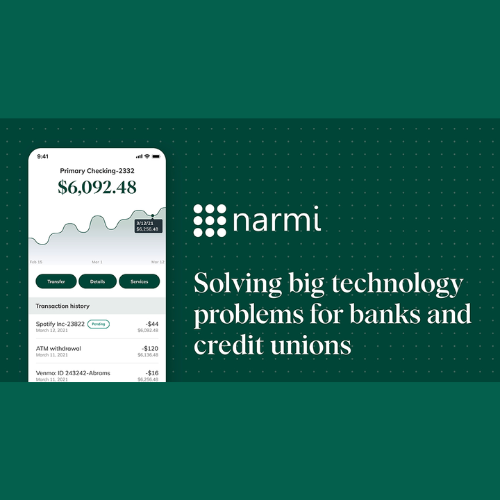With bank’s “earnings season” for the first quarter of 2025 already underway, it is difficult to get overly excited when the market seems more concerned with the macro volatility and uncertainty around tariffs, versus margin, growth and credit trends for any individual bank.
While I hesitate to oversimply all the hard work that goes into a community bank’s quarterly process, first quarter earnings should be predictable from my perspective, with most banks showing some degree of the following three trends:
- Modest net interest margin expansion largely due to better pricing on fixed term deposits (i.e. CD specials and brokered deposits priced 6-12 months ago are repricing lower at current rates)
- Generally stable credit with a few stray exceptions in both directions (i.e. new deterioration or resolution on previously identified problem credits)
- Limited loan growth with most banks opting to buy back stock in the first half of 2025, telling investors that loan growth will be more heavily tilted towards the back half of the year.
So, with that out of the way, where do we think value can be created in the bank industry this quarter and over the balance of 2025? Most likely with banks that can either (1) show an ability to profitably grow, or (2) re-simplify their business model and focus on extracting higher quality earnings versus net balance sheet growth.
Putting a public equity investor hat on for a second, I’d be using a barbell approach, with some combination of higher quality growth stories on one side (even if at premium relative valuations) and “fixer-uppers” on the other (i.e. credit improvement stories, strategy simplification or shrinking balance sheets – all at deeply discounted valuations preferably). While privately held banks’ valuations are a bit of a different story, they are typically dictated by their more liquid brethren so thinking along similar principles is logical in estimating future value.
Where does your bank fit in?
It is okay if you aren’t sure or feel as if your bank falls in neither of these buckets; markets can change quickly. However, if you aren’t a “fixer-upper” in some way, shape or form, and you are struggling to articulate your “growth” opportunities that will provide quality, above-peer earnings growth – that is a challenging place to be. It is also why you probably have a helpless feeling as your bank’s stock is being whipped around with the market swings and passive index trading volume.
Besides a fleeting moment when bank valuations improved in late 2024 and early 2025, the industry’s valuation has been discounted to historical relative averages basically since Silvergate Bank announced its wind-down in early March 2023. While that sounds negative on the surface, we prefer taking a more glass half full approach: now is the perfect time to be resetting your strategic plan around profitable growth opportunities, even if it means near-term growth is limited or negative. As a simple exercise, let’s think about two basic questions in your 2025/2026 strategic plan and forecast:
- Question 1: What is driving your bank’s growth forecast, and how are you funding it? The highest value creator is core deposits and tier 1 capital, although there are a lot of options below that which are still more valuable than utilizing brokered deposits and higher-cost borrowings.
- If you cannot confidently say you will be able to fund your asset growth with average to above-average liabilities, it is okay to reduce your growth expectations and re-mix your balance sheet towards higher quality. In fact, I would argue that in a market like this, you might end up creating more value long-term rather than stressing your liquidity and funding – it is not too late to address new realities around deposit generation and asset growth, even if fintech folks are trying to tell you otherwise.
- Question 2: What would it take for you to need external capital? This is a very interesting exercise, and in my opinion, it is not brought up often enough in executive meetings and Board rooms. It is sometimes addressed indirectly; like when devising a M&A wish list, but it should be addressed more holistically.
- This question will force you to devise a multi-phase game plan for improved performance. If your immediate answer is, “our valuation or growth isn’t strong enough to warrant us raising capital,” you are missing the point of the exercise!
- Think about what growth opportunities in your strategic plan are differentiating and should create market value, and how you can show the market progress on these initiatives to hopefully improve your currency and build a usable track-record to build market confidence in your company’s strategic direction and “use of proceeds,” in any future transaction.
- This is also a relevant process for privately held banks, as it could give a lot of insights as to what the bank’s realistic path towards shareholder liquidity could look like, and how difficult that path might be to navigate.
- This question will force you to devise a multi-phase game plan for improved performance. If your immediate answer is, “our valuation or growth isn’t strong enough to warrant us raising capital,” you are missing the point of the exercise!
I saw a quote on Linkedin this week that resonated with me, particularly after some of the strategic planning, investor relations and Board advisory engagements we have been working on the past three quarters. Paraphrasing, “strategic plans are far too often objective lists versus strategic initiatives (i.e. listing out things like grow core deposits, improve credit quality, etc.).” As we move through first quarter earnings, it is easy to just overlook the mostly predictable performance and blame tariffs for the weaker valuations – but I think this industry is more than talented enough to dig in and create real long-term value….one dollar at a time.











